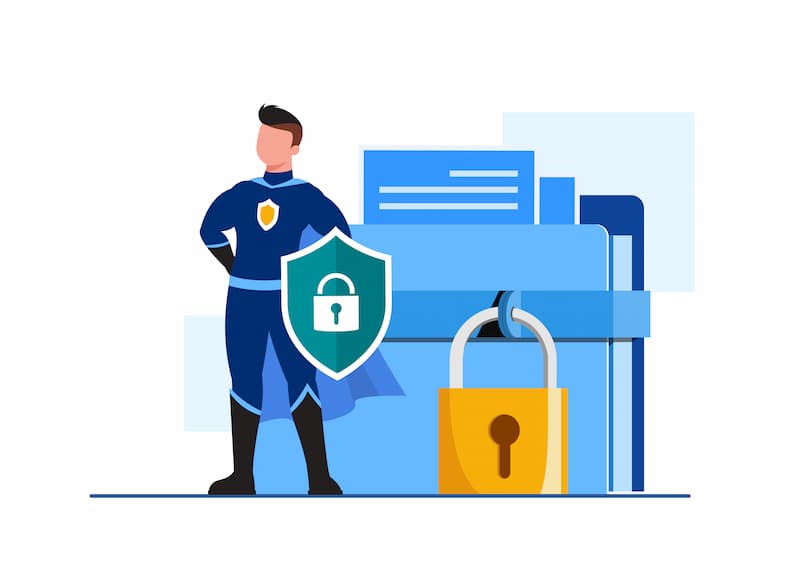Cybersecurity
- Avidity Technologies
- IT Services
- IT Managed Services
- Cybersecurity
At Avidity Technologies, we take the topic of technological security very seriously, and for us it is very important that each client not only feels safe, but also acquires knowledge of cybersecurity.
Cybersecurity is the set of procedures and tools that are implemented to protect the information that is generated and processed through computers, servers, mobile devices, networks and electronic systems.


Client Challenge
- Phishing of personal data
- Filtration of work and personal documents
- Insecurity in handling email
- Phishing through chain mail
- Insecure handling of applications and technological devices
- Malware and unwanted internet traffic

Avidity Solution
- Training in the safe use of technologies
- Training in the safe use of applications
- Teaching safe procedures for handling personal and business documents
- Periodic security audit of applications and equipment
- We protect all incoming and outgoing traffic by protecting your network and computers in our Bitdefender cloud
- Unlimited Phishing Security Tests
- Automated Security Awareness Program (ASAP)
- Security ‘Hints & Tips’
- Training Access Level I
- Automated Training Campaigns
- Brandable Content
- Assessments
- AI-Recommended Training
- Phish Alert Button
- Phishing Reply Tracking
- User Provisioning via Active Directory or SCIM Integration
- SSO/SAML Integration
- Industry Benchmarking
- Virtual Risk Officer™
- Advanced Reporting
- Training Access Level II
- Monthly Email Exposure Check
Benefits of Cyber Security
At its core, cyber security is about risk management. But leaders who see the opportunities beyond just preventing data breaches and minimizing cyber threats can begin to realize the full potential and benefits that cyber security can bring to a business.
1. Protection against external threats
Millions of cyber threats are being created every year and at great cost to businesses, exceeding $1 trillion in 2020 alone.
While primarily launched for financial gain, the reasons behind cyber attacks can be as varied as the perpetrators themselves. Whether it’s cyber criminals, hacktivists, or industrial spies, the common ground these bad actors share is how agile, sophisticated, and stealthy their attacks are becoming.
However, a robust cyber security posture that accounts for regularly-updated software can help organizations detect and respond to the methods, devices, and entry points being exploited, including:
- IoT devices
- Cloud and remote service attacks
- Fileless attacks
- Artificial Intelligence
- Supply chain attacks
- Social engineering
- Malware
- Man-in-the-middle (MitM)
- Denial of service
- Domain name system attack
- SQL injection
- Advanced Persistent Threats (ATPs)
- Zero day exploits
2. Protection against internal threats
The weakest link in the cyber security chain remains the human factor. Whether it’s accidental, negligent, or outright malicious, insider threats can come from current or former employees, third party vendors, or even trusted partners.
What’s more, the exponential growth of remote work, personal devices used for business applications, and even IoT devices in remote settings can help these types of threats fly under the radar until it’s too late.
But with proactive monitoring of networks and managed access, detecting and responding to threats can cut down on costly incidents. Moreover, providing consistent, up-to-date training can help turn the risk your people currently are into the extension of the cyber security solution you need.
3. Regulation compliance
In response to the increased cyber threats and exposure of sensitive data businesses face today, many regulatory bodies are setting standards to help protect organizations and their customers alike. Some of these regulatory standards include GDPR, HIPAA, PCI DDS, and SOX to name a few.
For industries that still remain underregulated, there’s opportunity for businesses to invest in cyber security and see compliance as more than an obligation.
In fact, according to data privacy and cyber security law expert Jamal Hartenstein, leaders could approach cyber security in regulatory compliance as “a competitive advantage, getting ahead of industry competition before underregulated industries become regulated.”
4. Improved productivity
Viruses and other cyber attacks can slow networks and personal devices down to a crawl, making it virtually impossible for employees to work. For websites to function. And for business to operate.
By implementing a range of cyber security measures — such as improved firewalls, virus scanning and automated backups — you can drastically reduce violations and the downtime it takes to remedy the breach. Education and training can also help guide employees to identifying potential email phishing scams, suspect links, and other nefarious criminal efforts.
5. Cost savings and value
According to the Hiscox Cyber Readiness Report 2021, the average cost of a single cyber attack to a small business in the U.S. is $25,612. Considering the fact that only about 40% of SMBs operate at a profit — the loss of data and cost to recover it, downtime to restart operations, and hefty fines can be a steep price to pay.
As cyber attacks only continue to grow more sophisticated and complex every day, it’s important to weigh the cost of dealing with one attack versus the value of taking preventative measures. By mitigating risks, you put your business in a better position to respond, recover, and keep existing customers happy — a far more cost-efficient option than attracting new ones.
6. Brand trust and reputation
Perhaps the greatest case to make for the benefits of cyber security in business is the reputation that you earn. And keep.
One of the most important factors in business growth is customer retention. Maintaining brand loyalty through a strong cyber security position is paramount for customers today, and the shortest path to repeat business, recommendations, and higher per-ticket purchases.
It also opens doors to potential future ventures and expansion, helping producers land on the vendor list with larger organizations as part of their supply chain — that are only as strong as their weakest link. According to the National Institute of Information Technology (NIST), the factors that allow for low cost interoperability and rapid innovation also increase the risk of compromise. With so many high-profile cyber breaches in the past two years alone, larger companies are examining closely the cyber security practices of third-party vendors.
FAQ
Cybersecurity is the practice of protecting systems, networks, and programs from digital attacks. These cyberattacks are usually aimed at accessing, changing, or destroying sensitive information; extorting money from users; or interrupting normal business processes.
Implementing effective cybersecurity measures is particularly challenging today because there are more devices than people, and attackers are becoming more innovative.
In today’s connected world, everyone benefits from advanced cyberdefense programs. At an individual level, a cybersecurity attack can result in everything from identity theft, to extortion attempts, to the loss of important data like family photos. Everyone relies on critical infrastructure like power plants, hospitals, and financial service companies. Securing these and other organizations is essential to keeping our society functioning.
Everyone also benefits from the work of cyberthreat researchers, like the team of 250 threat researchers at Talos, who investigate new and emerging threats and cyber attack strategies. They reveal new vulnerabilities, educate the public on the importance of cybersecurity, and strengthen open source tools. Their work makes the Internet safer for everyone.
Phishing
Phishing is the practice of sending fraudulent emails that resemble emails from reputable sources. The aim is to steal sensitive data like credit card numbers and login information. It’s the most common type of cyber attack. You can help protect yourself through education or a technology solution that filters malicious emails.
Ransomware
Ransomware is a type of malicious software. It is designed to extort money by blocking access to files or the computer system until the ransom is paid. Paying the ransom does not guarantee that the files will be recovered or the system restored.
Malware
Malware is a type of software designed to gain unauthorized access or to cause damage to a computer.
Social engineering
Social engineering is a tactic that adversaries use to trick you into revealing sensitive information. They can solicit a monetary payment or gain access to your confidential data. Social engineering can be combined with any of the threats listed above to make you more likely to click on links, download malware, or trust a malicious source.
Make it professional







